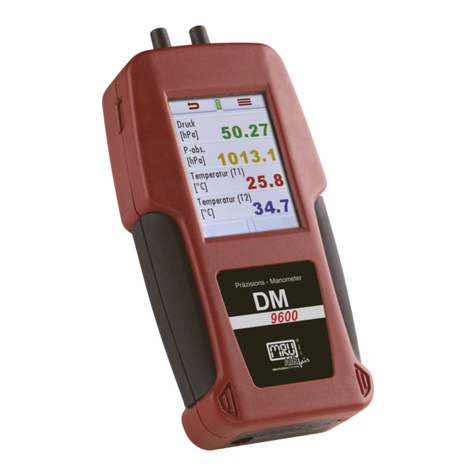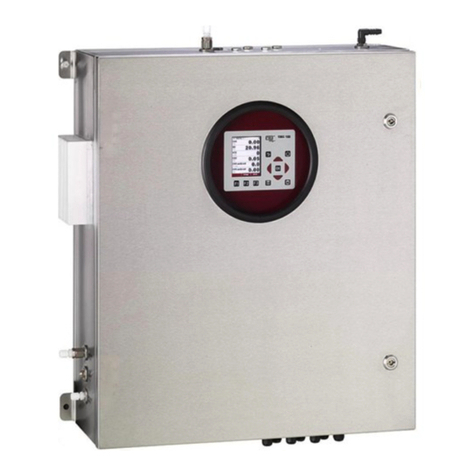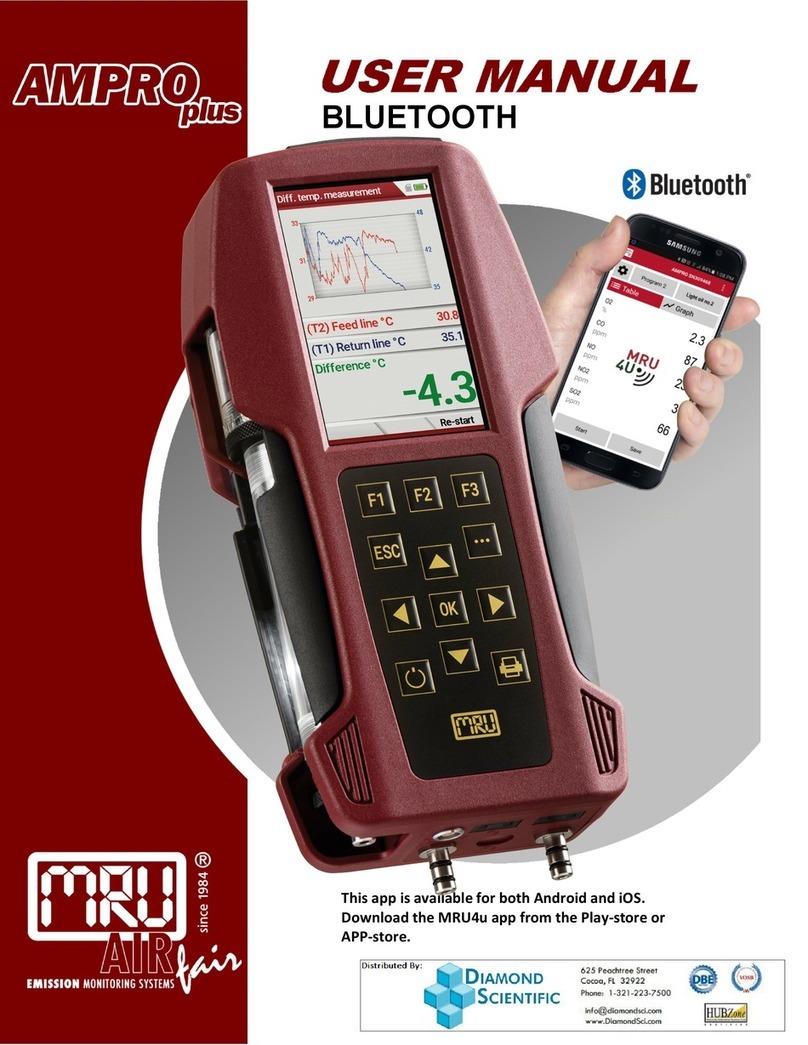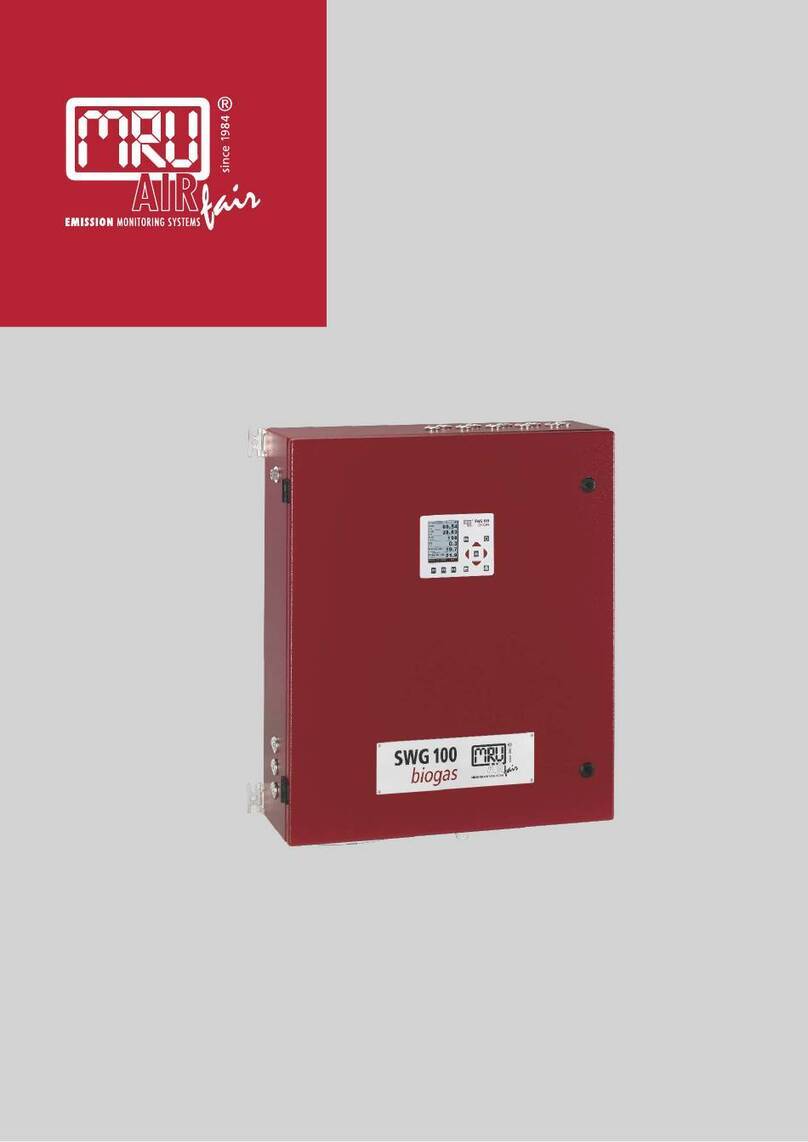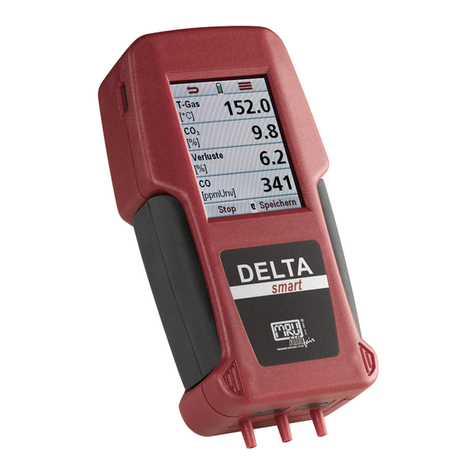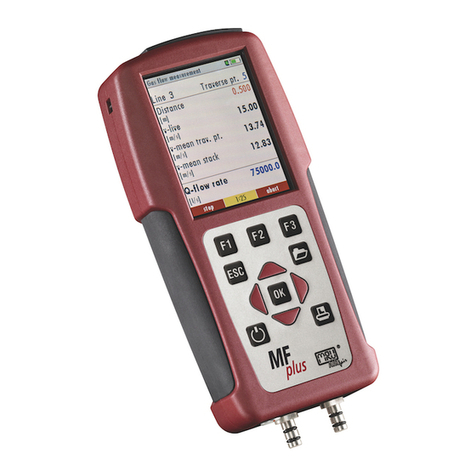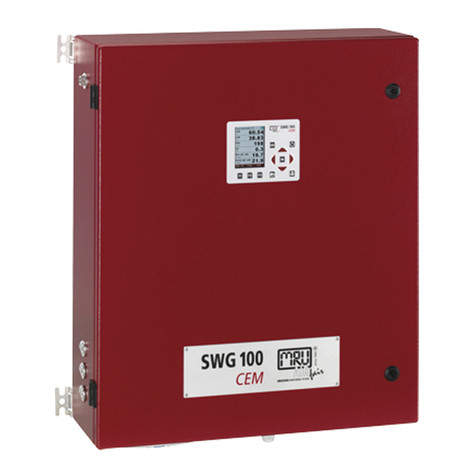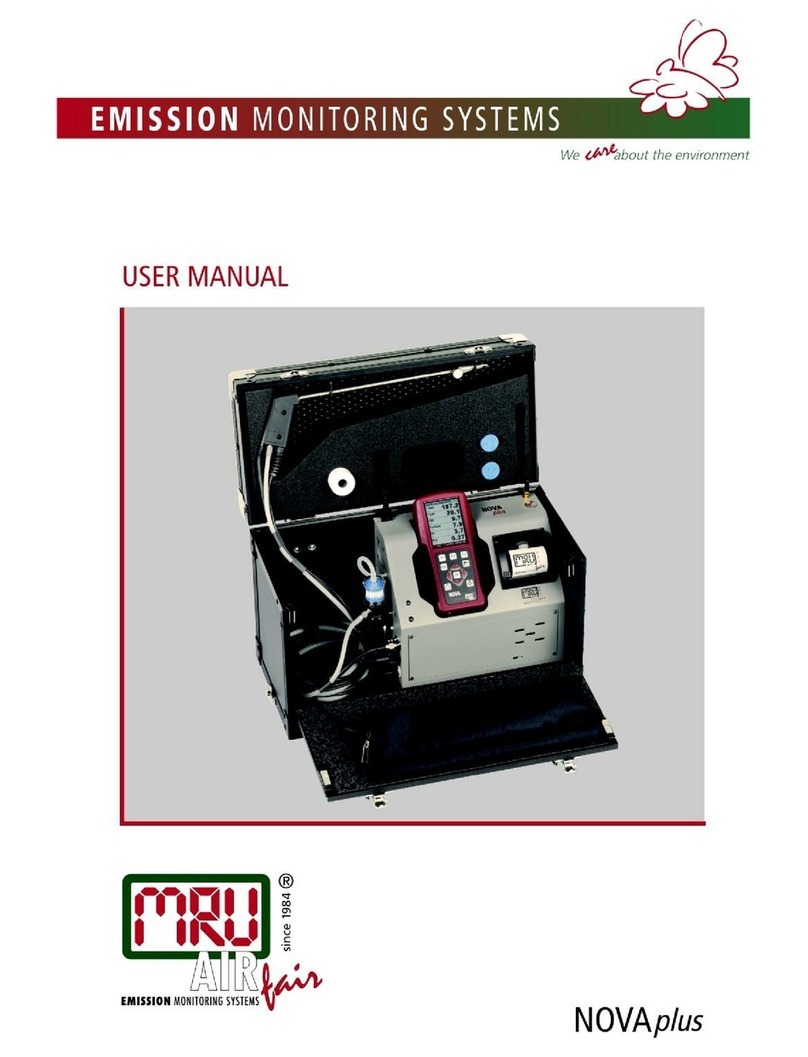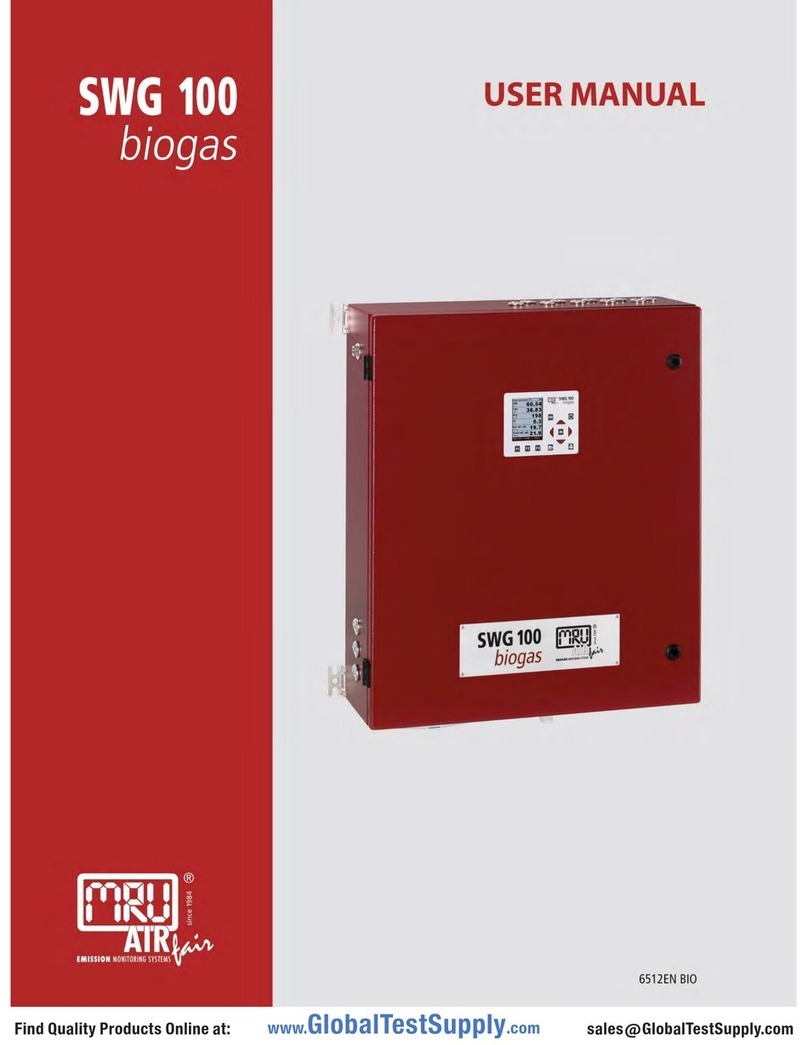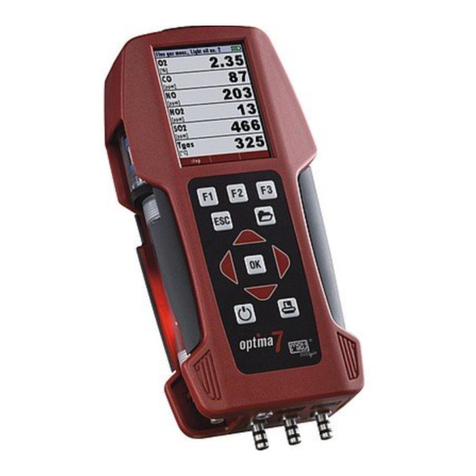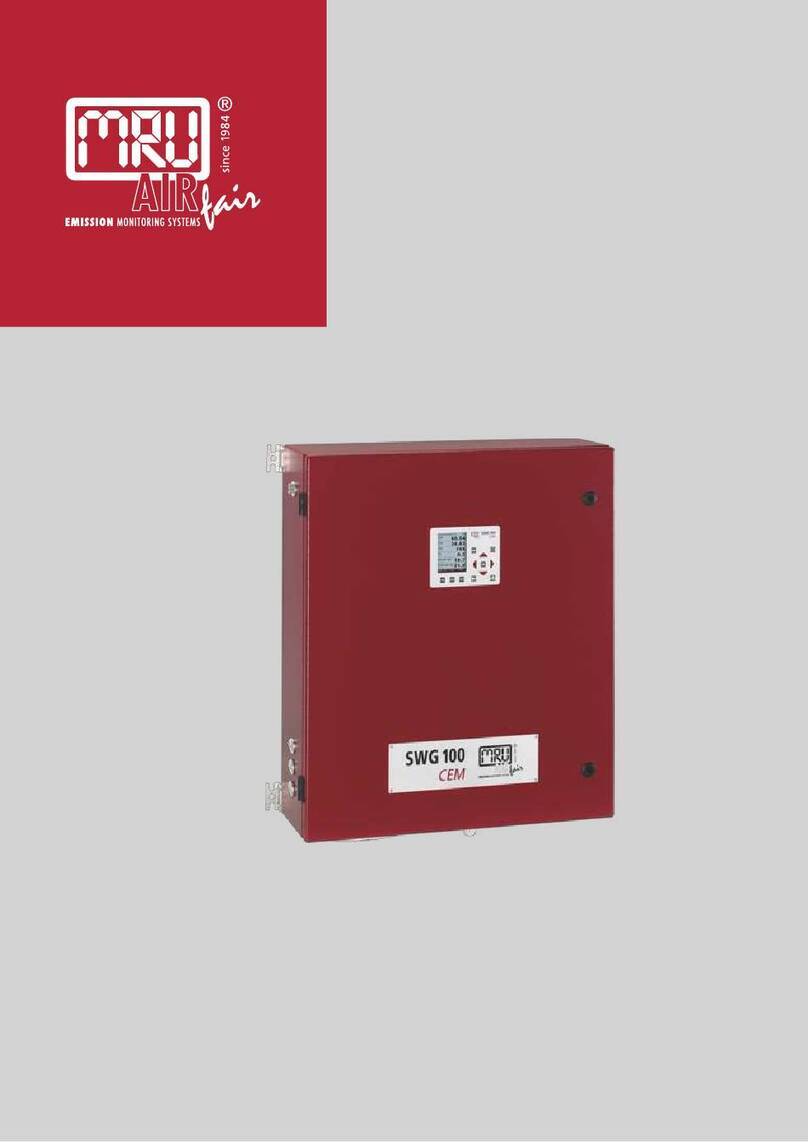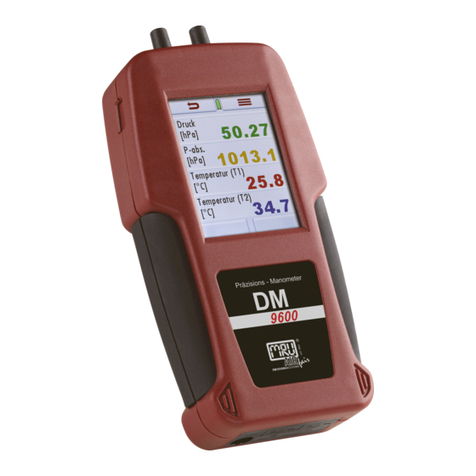MRU GmbH SWG 100 User Manual
Page 3of 141
Content
1. General Information.......................................................................................................... 6
1.1. Weather and environmental conditions...................................................................... 6
1.2. Installation instructions............................................................................................... 6
1.3. General important instructions for the plant operator................................................. 6
1.4. Important information about the user’s operation manual.......................................... 7
1.5. Safety Information...................................................................................................... 7
1.6. Packing ...................................................................................................................... 9
1.7. Return of hazardous waste ........................................................................................ 9
1.8. Return of analyzer...................................................................................................... 9
1.9. MRU Warranty conditions .......................................................................................... 9
2. Analyzer Description...................................................................................................... 11
2.1. Intended use ............................................................................................................ 11
2.2. Type plate ................................................................................................................ 11
2.3. Possible applications and analyzer options ............................................................. 12
2.4. Principle of operation ............................................................................................... 12
2.5. Special functions of the analyzer ............................................................................. 14
2.6. Physical characteristic of the gas analyzer .............................................................. 15
3. Scope of supply and delivery ........................................................................................ 17
4. SD-card content.............................................................................................................. 18
5. Installation manual ......................................................................................................... 19
5.1. Overview.................................................................................................................. 19
5.2. Installation of the analyzer ....................................................................................... 20
5.3. Connection of main power supply............................................................................ 22
5.4. I/O modules: Installation and setting........................................................................ 23
6. Operation of the analyzer (HMI)..................................................................................... 25
6.1. Display and keypad.................................................................................................. 25
7. Analyzer commissioning manual............................................................................ 26
7.1. Check country and language ................................................................................... 26
7.2. Check date and time of the instrument .................................................................... 26
7.3. Configuration of the alarm relays ............................................................................. 27
7.4. Configuration of the Modbus.................................................................................... 29
8Binding to a process control system: I/O modules ..................................................... 31
8.1. Position of the IO module inside the analyzer.......................................................... 31
8.2. Pin assignment ........................................................................................................ 32
8.3. Analog outputs 4-20 mA .......................................................................................... 34
8.4. Alarm outputs........................................................................................................... 40
8.5. Analog inputs (4-20 mA) .......................................................................................... 45
8.6. Configuration of the external control (Option: IO module)........................................ 50
8.7. Mounting and installation of the gas cylinders for the auto calibration function ....... 57
8.8. Cycle configuration .................................................................................................. 60
8.9. Administrator PIN code ............................................................................................ 66
8.10. Power-On of analyzer .............................................................................................. 66
9. Operating the analyzer.............................................................................................. 67
9.1. General process of the measurement cycle............................................................. 67
9.2. Data Storage Menu.................................................................................................. 70
9.3. Extra menu: Overview.............................................................................................. 74
9.4.Update the firmware................................................................................................. 83












